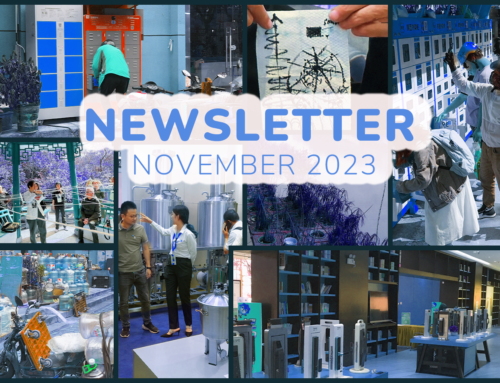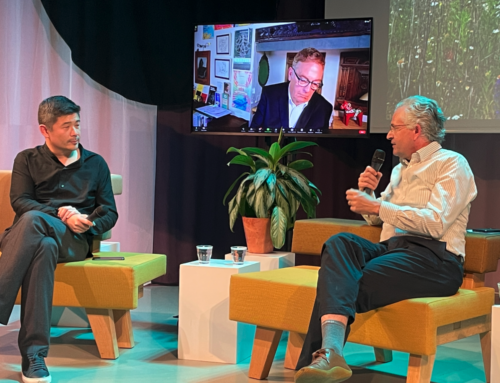The lone genius is dead. Long live collaborative design. I was interviewed by Chee Pearlman for Wired. Chee wisely published less than the stuff that appears here, but, shucks, this is my column….
Interview for Wired. Questions by Chee Pearlman, who also interviewed Paola Antonelli, Tim Parsey, Bruce Sterling, Lee Green, Lorraine Wild, Don Norman, Ayse Birsel, Tucker Viemeister, David Kelley, Ted Selker, Ray Riley, Ettore Sottsass, Erik Adegard, Robert Brunner,Trevor Creed, Gary Fisher, Andy Proehl, Rick Valicenti, Richard Saul Wurman and Susan Yelavitch.
Chee Pearlman: Let’s talk about experience design.
John Thackara: I tend not to like or trust any all-encompassing experience that has been designed for me, and not with me: theme parks, shopping malls, air travel, most websites, 98 per cent of e-learning products.
The majority of architects and designers still think it is their job to design the world from the outside, top-down. Designing in the world; real-time, real-world collaborative design; strikes many designers as being less cool, less fun, than the development of blue-sky concepts. To be fair, many younger designers feel free to set the stage for what is experienced. But the big money still goes to the control freaks. People do like to be stimulated, to have things proposed to them. Designers are great at this. But the line between propose and impose is a thin one. We need a balance.
CP: When is a design finished?
JT: Design has been too slow to focus on services rather than on things. As a result, we have flooded the world with pointless devices. It has taken us far too long to consider material end energy flows in all the systems we design. We need to think about the consequences of technology before we act, not after. We’ve created an industrial system that is brilliant on means, but pretty hopeless when it comes to ends. The result is a divergence between technological intensification and perceived value. We are hovering uneasily between an undiminshed infatuation with technology, on the one hand, and unease about its actual value, and possible rebound effects, on the other. Locating innovation in specific social contexts can, I am sure, be a resolution to the innovation dilemma. Designing with people, not for them, can bring the whole subject of ‘user experience’ literally to life. Looked at in this way, success will come to organisations with the most creative and committed customers (sorry, ‘actors’). The era of the lone design genius working in isolation is over. But not all the lonely geniuses realise it yet. This only matters when you get stuck in a restaurant with an egocentric design star who cannot or will not think about anything except himself. (It’s rarely a she).
CP: How about the contribution of design to the bottom line?
JT: I’ve always found it hopeless trying to isolate the financial contribution of design to a business. Yes, design matters; but so too does technology, the value proposition, the people who work in the business, and people who cohabit its space (the ones we used to call ‘users’ or ‘customers’). All these factors interact in ways too complex to measure financially. I don’t know the numbers, so I simply assert the following: design contributes to the ‘triple bottom line’ of environmental impact, social quality and business profitability. It’s a no-brainer: helping companies re-tool their processes to reduce wasteful flows of matter and energy reduces costs and adds quality.
CP: What is the next killer-app?
JT: Words like ‘killer app’ and ‘cutting-edge’ are throwbacks to a Neanderthal time when technology was seen as an end-in-itself. Sweet spots occur at the intersection between latent social needs, open systems, smart consumers and smart companies. That’s when real value is created. The result will probably be a new service that constantly evolves. The best way to navigate a complex world is through a focus on core values, not on chasing the latest killer app. We’re in the middle of a transition from an economy of transactions, to an ecology of relationships and contexts. Business strategies based on the ‘domination’ of markets are hopeless. The best companies are focusing on the innovation of new services, and new business models, rather than on new technology per se.
CP: What is your favourite design?
JT: My all-time favourite information product remains the Oanda Currency Converter (www.oanda.com). I use the site almost every day to calculate guilders into lire into pounds sterling into US dollars into euros. If this is all that the Internet revolution has brought us, I am content. It is just so useful, it’s sublime.
CP: So what is the future of design?
JT: I’m less intrigued by science fiction futures than by social fictions; untapped needs that can be met using the technologies we already have. Our technologies may well be multiplying, but we’re finding it harder to find useful or valuable ways to use them. On the contrary: as I state in Thackara’s Law: if you put smart technology into a pointless product, the result is a dumb product. But I’m not naive. We are innately curious, playful, and creative, so technology is not going to go away: it’s too much fun. We’re at a turning point in the relationship between design and network communications. Which is just as well: sometime soon there will be hundreds of microchips for every man, woman and child on the planet. Hardline systems people, steely-eyed marketing types, and formerly effete designers; plus fellow travellers like myself; now find themselves working together. And they; we; are getting on surpisingly well. With levels of complexity growing all the time, dividing our work into ‘hard’ and ‘soft’ design simply doesn’t work. Pervasive computing and experience design are accelerating the transformation of what we mean by ‘design’.



